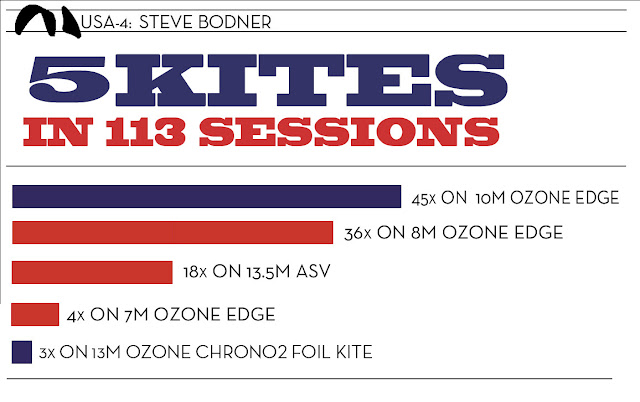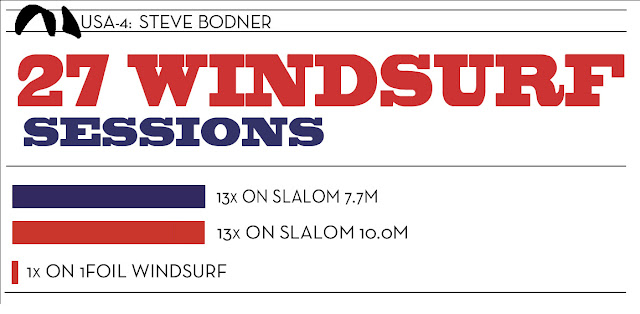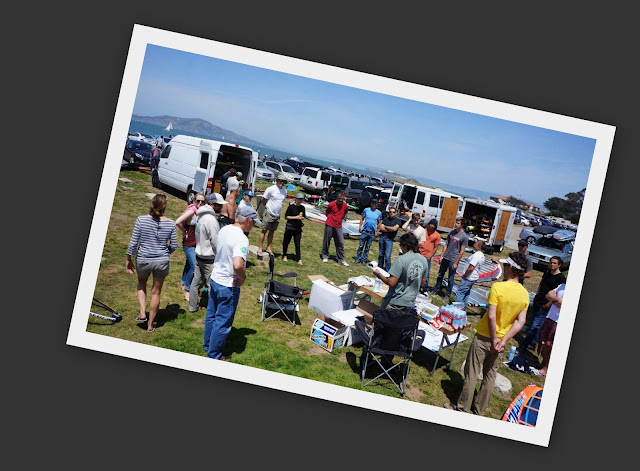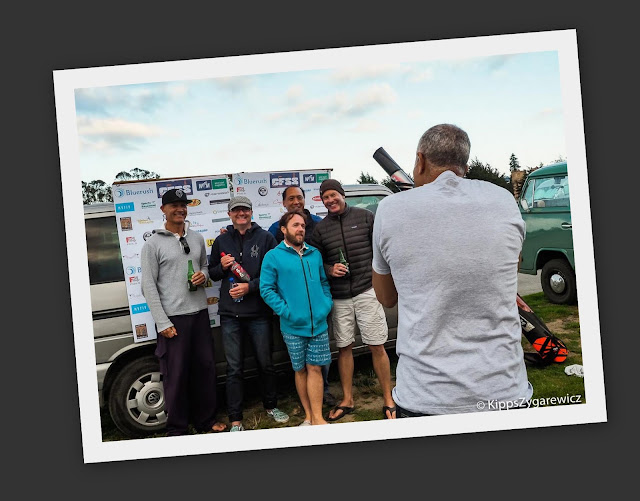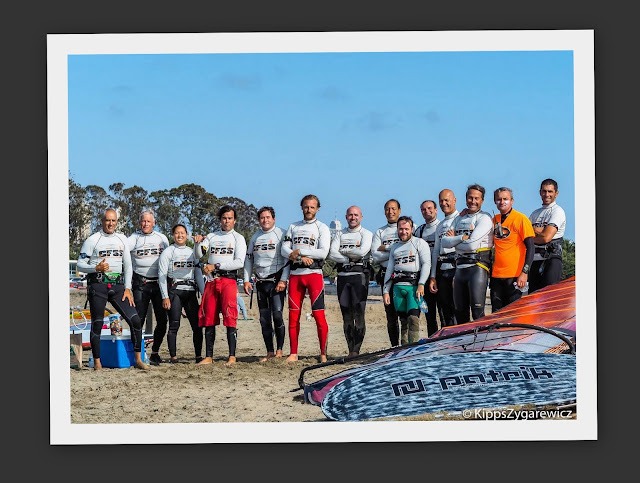I love statistics- keeping track of things and analyzing the data to see what I can learn. For many years, I've used twitter to keep track of my sessions on the water, then at the end of the year I can look back and graph everything to see the trends for the year: how many sessions, how many times on any particular kite, how many times in each month I've sailed, even how many days I've spend racing. All this data may seem like useless information but when properly presented, it gives a better idea of how I've spent my time. After all a self examined like is a life worth living...

By all means, 2016 was another great year on the water with 140 total sessions from January to December. I'm down 24 sessions form the 2015 season but my days kiting went up from 104 to 113. For the 2nd year in a row, I've kited more than windsurfed. While last year it was a 3:1 ratio, this year, I kited 5x for every windsurfing session logged. I don't plan on ever giving up windsurfing but as I get older, kiting- especially foiling is a lot easier on my body. I don't have nearly as many lower back issues as when I was racing formula boards with 10-11m rigs or pumping the RSX in light winds.

It's my 4th year kiting and 31st year windsurfing. So much has changed over the years with the equipment getting better and better each season. It's a constant development and evolution of the sports that keeps me coming back for more. I upgraded my medium slalom board this season after having gone a bit to far last season and breaking the previous one in half. A new Ml slalom board never disappoints. I upgraded the foil board as well getting a custom 2nd hand Mikes Lab which makes a world of difference with the ML foil, Finally- I delved into the world of foil kites upgrading to a 13m chrono2 which will start the learning curve all over again. If there's one thing Ive learned over the years it's that you always need to constant adjust to stay current, Never get too comfortable and always be pushing you limits.

The season never really stops but only slows down a bit in the winter months when the wind is not as constant like the spring, summer and fall but with foiling, its becoming less and less of an issue. In the sketchiest of days when the wind is up and down, I'm more likely to get a session in on the windsurfer as it still a safer option for getting back to shore unassisted. While the foil has opened up more light wind days, it can end in disaster when you need to self rescue on the water after dropping the kite and failing to relaunch. I end up taking more risk when I know I've got the support of a rescue boat- especially during the St.FYC events.
The best advice over the years- don't get too greedy.
I always sail with a VHF radio as I know the Coast Guard is only a short call away for the last resort rescue.

Kiting has taken from over windsurfing just like windsurfing did for sailing nearly 25-30 years ago. Before it used to be every day kiting meant a day not windsurfing. Now in 2016 its changed so that every day windsurfing is 1 less day kiting. While kiting can still be a bit intimidating, Im able to kite in most all conditions from nuking 30-35k on a 7m and surfboard to a low wind limit of 10k on a 13m and foil board. 65% of my kiting sessions came on the foil board while the other 35% were on a surfboard. If its over 20k, I usually opt for the surfboard and have as much fun as I can as I'm still a relative noob in the kite world. I must admit, even for back and forth sessions mowing the lawn and playing in the voodoo chop, that the SF city front delivers on a regular basis, is way more fun on a kite than a windsurfer.
The 10m and 8m ozone edges are the backbone of my quiver providing nearly 71% of the total sessions for the season. These 2 kites works double duty on both the foil and surfboard in the middle range of the wind zone. On the light wind days, the 13m ASV and now 13m Chrono2 foil kite provide enough power to make it out in as little as 10k of breeze. While I only used the 7m 4 times, it's a necessary part of the quiver if you want to kite comfortably in winds above 25k.
My windsurfing sessions were down form 60 in 2015 to 27 this year season. While this may be case for alarm, it all balances out with time on the water- whether it be on a kite or on a windsurfer- it's all good. Looking closer at the data, I found I used the Avanti 7.7 and medium ML slalom board as much as I used the Avanti 10m and 89cm ML slalom board- 13 times each. Both are an essential part of racing on the city front with the medium set up being used most of time when the wind is over 16k and the XL set up when racing is a bit sketcher and holes are present at the inside gybe marks. The 10m and XL 89cm ML board are also key to getting out in the fall and winter months where I can sail up to the Golden Gate bridge and enjoy the swell. There's nothing quite like riding XL swell outside the gate in the winter months being the only one out. The solitude never felt so good. Finally - the XL set up made for a couple of good long distances races this year around the Bay.
Viva la windsurfer!
Over 140 sessions this season, I used my 2 foils boards the most- almost 45% of all my sessions logged. In July, I upgraded to a smaller foil board- buying a 2nd hand ML board. It took quite while to get used to the reduced deck area but combined with the ML foil, it is way more predicable, steady and comfortable than what I was riding before. The custom surf board was the next most used board with 39 sessions or 29% of all sessions. Its my go to for having fun in 20k+ or when sailing on the coast in waves. The windsurfing board quiver has been reduced to just 2 boards- a 105l, 70cm wide ML slalom board and the 89cm ML sled.
All in all, the majority of my boards are made by Mike Zajicek of Mikes Lab in El Sobrante, Ca. Ive trusted him to make by boards since 2003 and he's never disappointed.
"In Mike, we trust!"
This season, I spent all of my race days at one venue- the SF city front racing under the burgee of the St.FYC or the Crissy Field Slalom Series. The St.FYC is unparalleled for running board racing whether it be on a foiling kite board or slalom windsurfer. For this- I am eternally grateful. We are spoiled with their superb race management, and after racing socials at the club.
This year was the 3rd season for me on the St.FYC Thursday Night Bluerush Kite Series with just over 24 races for me over 8 evenings of racing in the summer months. While I finally made some progress getting around the course, the bar is constantly being raised and I missed out on quite a few finishes by not making the 10m time limit. It's all good though because racing is not really against other people but against yourself. The same applied for the Hydrofoil Pro tour which came to town again in 2016. Just showing up to race can go a long way. I put myself way out of my league finishing almost DFL in most of the races but came away being a stronger and wiser kiter.
In all good time, I remind myself.
I race because I enjoy the process and am always looking for ways to of improve.
Racing puts you out of your normal comfort zone and forces you to keep up with those around you.
Never give up is my motto.
This was my 1st year in 16 seasons not racing the Friday Night Course racing series. Last year, we split the series so that 4 of the Friday nights became a separate slalom series. While I only was able to make 2 of the 4 race nights + a night for RC. I managed 1st and 2nd's taking 4th overall in the series. For the 2nd year, Ive helped run and organize the Crissy Field Slalom Series. Its a grass roots effort to get more people racing on the city front. This year, we introduced more racers and had 4 great events. With a busier schedule than normal, I was only able to make 2 of the events but managed to win the 1st race day proving this old dog has still got some game left in him.
My kite board race days went up from 13 to 16 in 2016 while the windsurfing race days went from 13 to 7. Any day racing on the city front is a good day to say the least. Even if you are DFL, getting around the course can be victory enough if you've got the right mindset.

This season, I spend the majority of my time kiting and windsurfing at one beach- Crissy Field
90% of my session logged where from Crissy. Its like my back yard with nearly 1 of 3 days of the year spent there. I cant imagine a better place to enjoy the SF Bay from. Its one of the few urban beaches in the US that you can get easily over 100 sessions a year at without trying too hard. This place delivers the goods from a constant supply of sea breeze, to voodoo chop to swell and racing. Even after 18 years of sailing on the SF Bay, sailing under the golden gate bridge is still one of the most spectacular things I've ever done. It gets me every time.
I made it up to Sherman island this year after a few years of not going at all. Its about an 1-/12 trip up there but very well worth it to kite in warm, fresh water. My goal is to kite here more next season as making progress comes more rapidly here when the wind and water are not intense as Crissy.
Another milestone was kiting in Hood River for the 1st time in many visits there. I'd always windsurfed and this year I had a blast exploring the river on kite. I even got a nuclear morning with 25-35k of breeze & 5-8' swell on the 7m and surfboard.
Finally, Stinson beach and the gulf coast of Florda rounded out the list of venues sailed this season
I still can't believe how fortunate I am to get 140 sessions this season. Having a passion like kiting and windsurfing certainly leads to a more balanced and happier life. Looking back, I wouldn't have it any other way.
As always- enjoy the ride.
Happy new year.
sb

